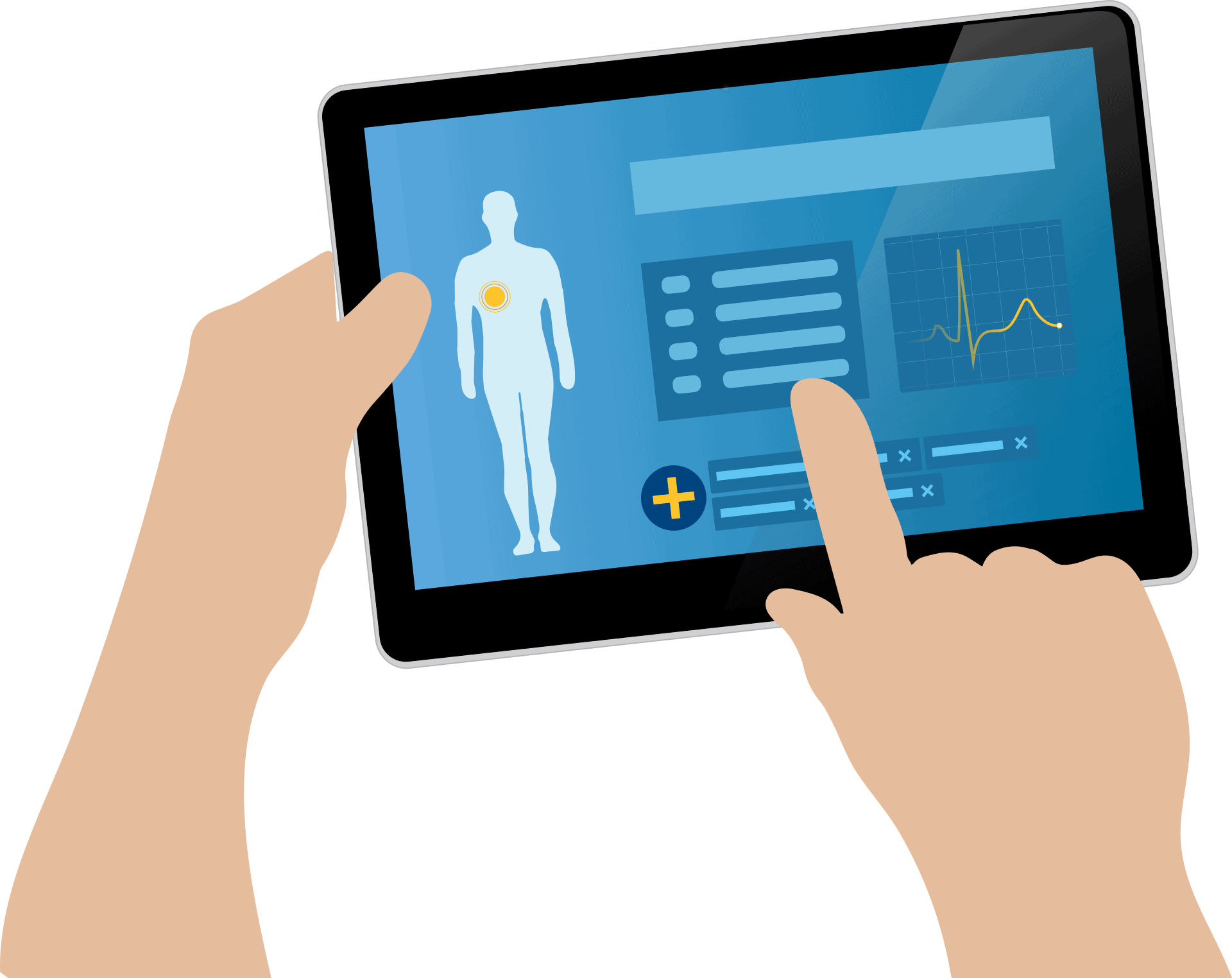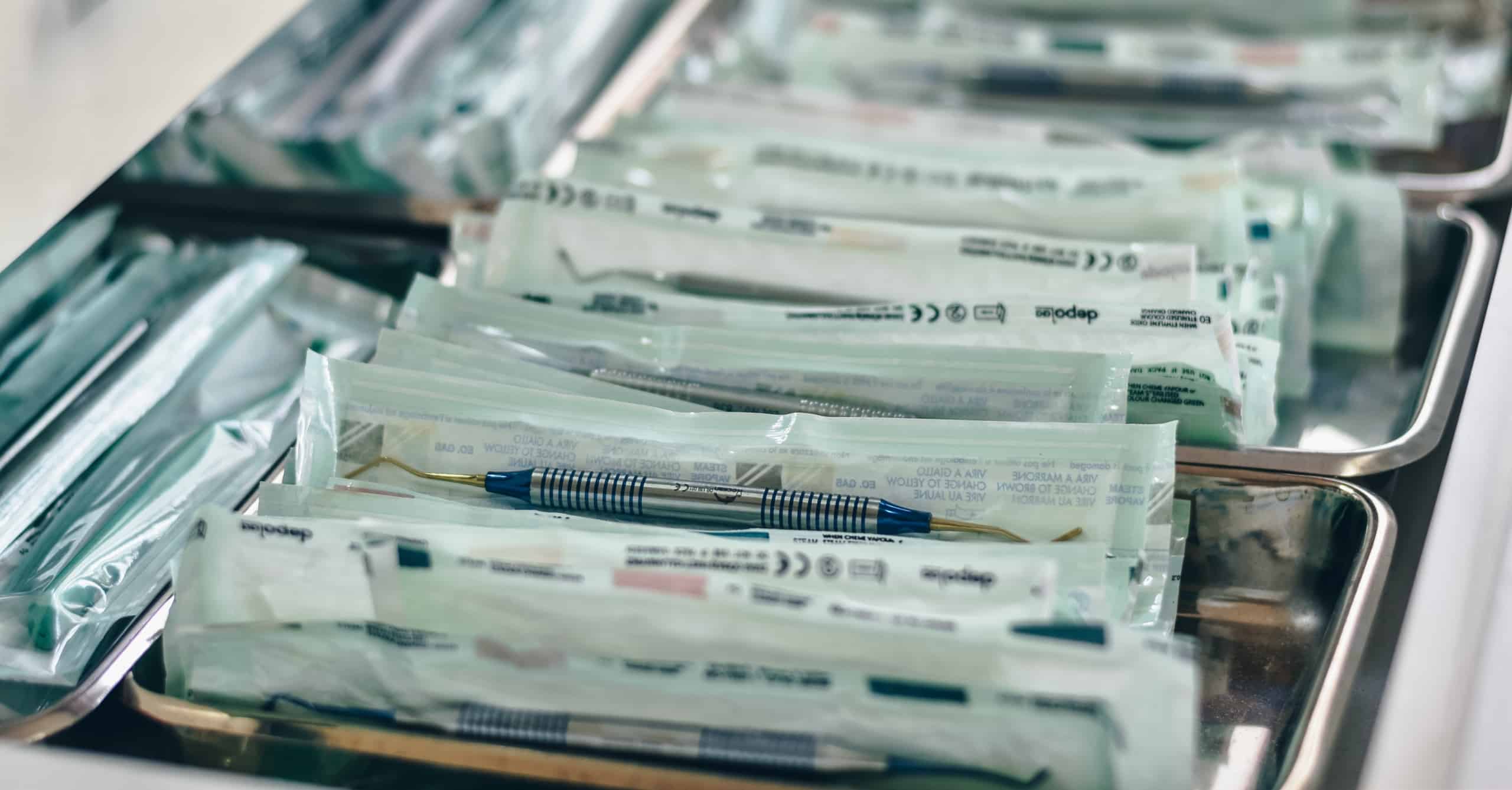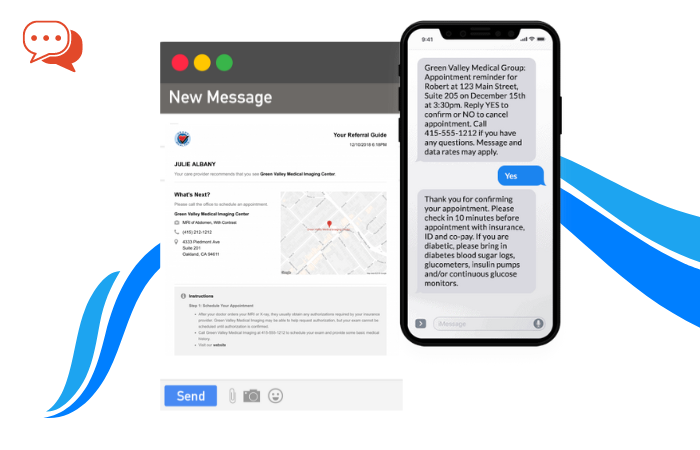The upkeep of medical records and patient information has been a burden for health care providers as much as the records and data have been necessary to provide quality healthcare. Each patient’s EHR (electronic health records) collects their medical history, medications, and medical staff’s observations and diagnosis during active care. EHRs can improve the ability to diagnose diseases and reduce—even prevent—medical errors, improving patient outcomes. In the past, if a patient moved, changed doctors, or visited a different medical facility or emergency room, medical records would have to be requested from the primary care physician, and it could take days or weeks for that information to be transferred by mail to the current provider. That can cause dangerous issues when the situation calls for immediate care or the patient is unable to communicate their medical history. Has the use or overuse of EHR improved healthcare? How has it affected healthcare providers and patients?

Photo by mcmurryjulie on Pixabay
IS EHR HELPING OR HURTING HEALTHCARE?
Due to this slowdown in communication, patients were at higher risk of being forced to have expensive testing redone or be misdiagnosed due to a lack of information for the provider. A patient may be able to tell their medical history and symptoms, but they cannot always explain what a previous physician has tested or checked. This is why the introduction of electronic health records (EHR) has been a vital step in improving healthcare experience and access to informed medical care for more patients.
The Scope of EHR in Modern Care
To sum it up, an EHR is a software system that can be used in multiple locations to access healthcare document information and manage those records. The electronic record can contain any information entered by a healthcare provider, whether they be from a family medicine practice, a specialist, or emergency care staff. Information such as past and current medications, allergies, radiology, and laboratory results, shot records, and any treatments the patient is currently going through. With all this information available, doctors and nurses will be able to assess a patient’s needs and begin treatment more quickly.
The scope doesn’t stop at simply holding the information, though. Often, EHR software can bring up alerts for medication interactions, allergies, and other forms of treatment that could negatively affect the patient.
Another benefit of managing these records electronically is that they can be accessed and transferred quickly across a medical facility. When a new medicine is ordered for a patient, it can be approved and filled quickly. If a patient begins having an issue and needs a particular treatment, it can be requested more quickly and evaluated by a physician. This sped-up care can help patients get the treatments they need, and doctors and nurses can keep all the information in one easily accessed place to ensure impeccable patient care.
The Effect of EHR on Medical Staff
Gone are the days of a chart hanging at the end of a patient’s bed or on the door to their room. Now, aside from a patient’s vitals splashed on a nearby whiteboard, any relevant medical information is safely stored in the hospital’s electronic medical record system. Nurses have computers attached to their carts, and an attending doctor is more likely to be reading from a tablet than a clipboard. Each team that comes through will have their own access to the needed patient records and update information almost immediately. This speeds communication across departments and creates a better flow for patient care.
Incoming patients, whether in a clinic, specialist’s office, treatment center, or hospital, can have their data entered and updated to reflect their current status. As the patient moves through various stages of their visit, nurses can record vital information and check previous health records if needed to provide optimal care and have any information relevant to the current visit available. This could be active treatment plans, allergies, or medications the patient is taking. Doctors can quickly access data and spend more time working with each individual. Any new treatments or medications can be entered into the system, which will allow a person to be provided the best care in a reasonable amount of time.
Quick access to information isn’t the only benefit for medical staff. With each treatment, medication, and response-able to be more quickly recorded, the liability from errors in care can be monitored and avoided. The updated information will show that the medical staff is adhering to best practices and sound medical reasoning. So many things can happen quickly in a medical setting that having detailed and legible records to review can help establish a sound defense as to why a decision was made or certain treatments were performed or not.
This way of tracking what happened and when in a situation can be the difference between a solid medical reason and someone’s job falling on the line. There is less likely to be a discrepancy or mistake between what a doctor scribbled down on a form and what a nurse reads. With clear, concise, trackable care, all medical staff can feel more secure carrying out their assigned tasks.
How EHR Directly Impacts Patients
Many of the patients being seen today have grown up in the information technology age. People are accustomed to and usually prefer that their information be securely but quickly available. Many patients will know their vitals before a nurse can measure them due to smartwatches and fitness monitoring devices. A glance at an app will tell many people something that can take several minutes to assess during intake. This has made some patients more impatient than ever. They expect that things are digitally stored and can be accessed quickly.
Patients of any age are benefiting from electronic prescribing (E-Prescribing) systems. They expect that a medication will be sent, filled, and waiting for them not long after leaving a doctor’s office. These systems also keep patients safe by checking medication contraindications and possible drug interactions with medications a patient may already be prescribed. This doesn’t only improve the care for the patient but can save lives.
Older patients may not be as intuitive about the electronic records, but the direct impact on their care is well-documented. Aside from the ease of use for the E-Prescribing in getting medications filled safely and efficiently, patients can have their Medicare coverage information available and alert if an Advance Beneficiary Notice is needed. Having these details up-front can minimize the risk of a procedure being performed, and coverage later denied if the Advance Beneficiary Notice was not obtained.
Patients often want to be involved in their care. They achieve this through self-monitoring devices and by tracking their health information through an available Patient Portal connected to their physician’s EHR. This allows patients to participate in the care they receive actively.

Photo by on Pexels
Changing Dynamics in Outlying Medical Professions
The benefits to patients, care providers, and medical facilities are exceptional. Another factor to consider is how this new technology changes the relationship with the outer layer of record-keeping in medical practices. Doctors, nurses, and pharmacists may be the main point of contact for a patient, but much of the work that keeps things running is done in the background. Insurance providers, medical transcriptionists, and others working the administrative side of medicine are certainly affected by the changes electronic healthcare document management has brought to the table. For some, these changes have brought a level of ease to the workflow, and for others, it has altered the description of their job entirely.
Those working in the insurance industry have found that facilities with an EHR in place have an easier time managing patient care and processing insurance claims. In the past, insurance had to be filed manually through an enormous load of paperwork and would have to be mailed to the agency. Often, patients would have to fill out and mail in individual forms for yearly procedures to ask for a reimbursement for covered services. EHRs have eliminated the need for those frustrating and lengthy paper trials. Now, patients can have their coverage checked quickly and that information stored in their records. Insurance companies can request electronic files from any facility their customer visits, and proper coding and billing can be done more efficiently and with fewer steps for the patients.
One area where electronic health records have changed things more drastically is in the field of medical transcription. In the past, doctors would record medical information onto tapes and later audio files that transcriptionists would type out into medical forms for offices, hospitals, and laboratories. Major improvements in voice recognition software that have been integrated into EHR programs have allowed doctors other medical professionals to record their information directly into the medical record. With the traditional transcription role not used as much, many transcribers have had to alter their job to editing the EHR information. As far as voice recognition has come, it can still produce mistakes, particularly if a physician has an accent the software is unfamiliar with or cannot understand.
Though the landscape has changed for these jobs, it is mostly in a positive way. Without the load of paperwork to be sorted through by the insurance company, claims are processed faster, and facilities can receive their payment for patient care faster without putting the full burden on the patient. And transcriptionists have found that they are still relevant in processing medical records even if the work differs somewhat from how things used to be. These changes may have posed some challenges at the beginning of transitioning into use, but with the speed and accuracy, they lend to the process, the changes and challenges are well worth it.
HIPAA Compliance and the Electronic Record System
Having everything easily accessible to a patient’s care team is fantastic, but there are valid concerns regarding the safety and privacy of patient information. Both patients and health care offices want to make sure that information is protected and in full compliance with HIPAA regulations. These standards have had to change with the integration of EHR into modern medicine. Still, HIPPA has developed a set of national standards for EHRs to follow to protect confidential patient data. The U.S. Department of Health and Human Services recommends that an EHR offer features such as access control, an audit trail, unique encryption code, and regular security updates. Here’s what that looks like.
Protecting electronic information requires that it be held encrypted at all times. A good EHR software will have this encryption built in. The encryption changes the information into an unreadable code that can only be read by those who have the proper software and credentials. HIPAA requires that a compliant EHR use passwords or scanned badges to restrict access to information to authorized personnel. This should be part of an audit trail that will notify users who last viewed the information and what they added or changed while working with it. This is an important layer of protection, not only for patients but for medical staff as well.
A final important requirement is that the software has consistent security updates. With the rise of computer knowledge, hacking has become less science fiction and more reality. Whenever a security wall is updated, hackers begin developing a way around or through it in their search for private information. A HIPAA-compliant program will be updated often to fight this threat.
It is, of course, up to each hospital or practice to ensure these measures are taken seriously. Training staff in the proper use of EHR about protecting patient information plays a major role in maintaining compliance. Regular audits are performed to evaluate that the systems in place are working. This usually covers everything from the medical staff to pharmacy orders to any vendors given access to patient health information. With all this information stored as data on servers instead of boxes of paperwork in closets, if a practice has a HIPAA investigation, they will be better prepared.

Photo by Ibrahim Boran on Unsplash
THE FUTURE OF ELECTRONIC HEALTH RECORDS
With the burst forward that technology has taken in the healthcare industry, it is apparent that things will only continue to become more streamlined. New tech is bringing in new ways to practice, such as telemedicine or personal health trackers. These things will likely become more integrated into the overall scope of patient care, with EHR holding everything together in the center. The future of all new technologies relies on the ability to access accurate, up-to-date patient data quickly. Medical workers, from doctors and nurses, to insurance staff, can look forward to things becoming more user-friendly. At the same time, patients can enjoy the benefit of receiving excellent care due to their information being available to their care team.










